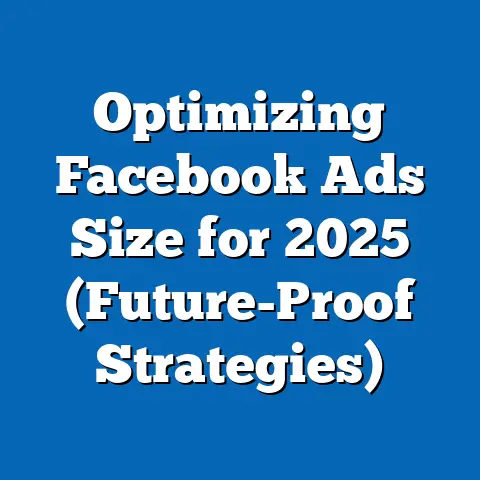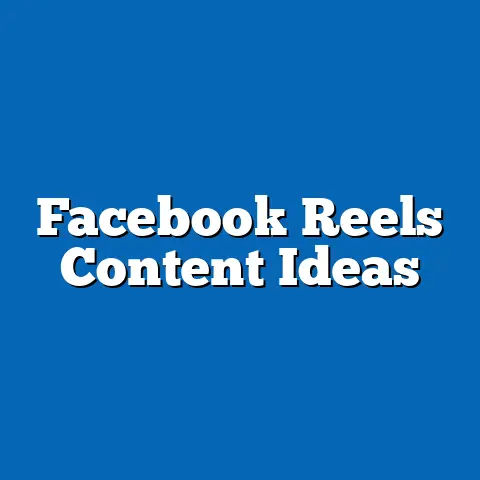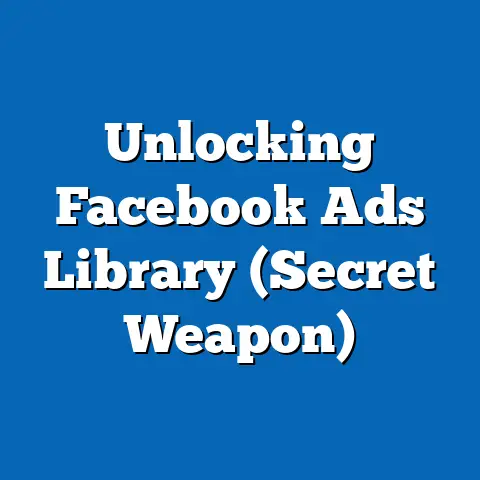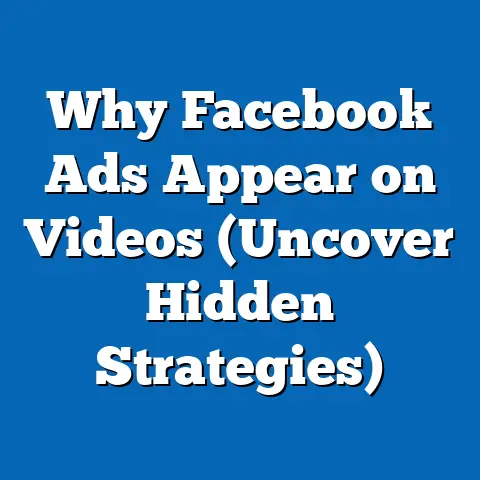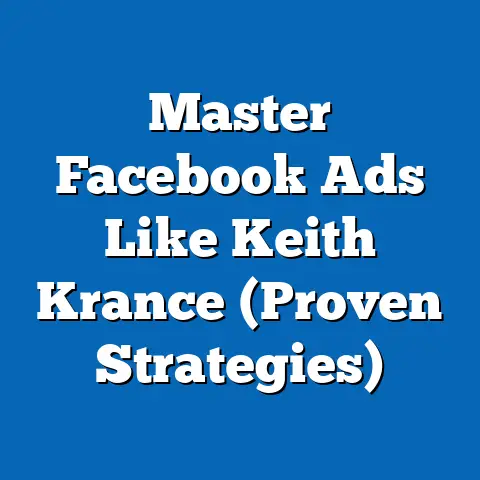Facebook Ads: Image vs. Video (Unlocking Engagement Secrets)
(Insert a contrasting image here: On one side, a cluttered, poorly designed image ad; on the other, a sleek, captivating video ad still.)
I’ve been immersed in the world of Facebook advertising for years, and one thing has become abundantly clear: visual content reigns supreme. But in a world saturated with information, simply having a visual isn’t enough. You need the right visual, delivered in the right format, to truly cut through the noise. Are you grappling with the age-old question: “Should I use an image or a video for my Facebook ad?” You’re not alone. It’s a question I ponder with every new campaign I launch, and the answer isn’t always straightforward.
The Power of Visual Content on Facebook
In the chaotic landscape of the Facebook news feed, where users are bombarded with posts from friends, family, and brands, grabbing attention is paramount. Visual content has emerged as the undisputed champion of capturing fleeting eyeballs and sparking engagement. I’ve seen it firsthand, and the data backs it up.
Think about your own Facebook browsing habits. What stops you mid-scroll? Is it a wall of text, or a captivating image or video? For most of us, it’s the latter. Studies consistently show that posts with visuals receive significantly more engagement than those without. For example, a recent HubSpot study found that Facebook posts with images see 2.3X more engagement than those without. And when it comes to video, the numbers are even more impressive. According to Facebook, video ads receive 10-15% higher click-through rates than static image ads.
But why is visual content so effective? The answer lies in the psychology of how we process information. Our brains are wired to process visuals much faster than text. We can comprehend an image in as little as 13 milliseconds, according to MIT research. This speed allows visuals to bypass our cognitive filters and create an immediate emotional connection. A well-crafted image or video can evoke feelings of joy, curiosity, or even urgency, compelling users to stop scrolling and take notice.
Furthermore, visuals are inherently more memorable than text. We remember 80% of what we see, compared to only 20% of what we read, according to the Visual Teaching Alliance. This increased memorability is crucial for brand recall and building long-term relationships with your audience.
The bottom line? In the crowded Facebook ecosystem, visual content isn’t just a nice-to-have; it’s a necessity. And understanding the nuances between image and video ads is the key to unlocking the full potential of your Facebook advertising strategy.
Takeaway: Visual content is essential for capturing attention and driving engagement on Facebook. Understanding the psychological impact of visuals is key to creating effective ads.
Image Ads – Simplicity and Impact
Image ads are the workhorses of Facebook advertising. They’re simple, versatile, and can be incredibly effective when executed well. At their core, image ads are exactly what they sound like: ads that feature a single image or a carousel of images. They’re the digital equivalent of a print ad, designed to grab attention, convey a message, and drive action.
One of the biggest strengths of image ads is their simplicity. They’re relatively easy to create, requiring less time and resources than video ads. This makes them a great option for businesses with limited budgets or those who need to launch campaigns quickly. I remember once needing to get an ad up in a matter of hours for a flash sale. An image ad was the perfect solution – I was able to create a compelling visual and launch the campaign within a couple of hours.
Another advantage of image ads is their quick consumption. Users can instantly grasp the message and value proposition without having to commit to watching a video. This is particularly important in a fast-paced environment like Facebook, where users are constantly scrolling and multitasking.
Over the years, I’ve seen countless successful image ad campaigns. One that stands out is a campaign I ran for a local bakery. We used a high-quality photo of their signature chocolate cake, accompanied by concise text highlighting the cake’s rich flavor and decadent texture. The ad was targeted to local residents who had expressed an interest in baking or desserts. The result? A surge in orders and a noticeable increase in foot traffic to the bakery. The power of a simple, delicious-looking image!
Best Practices for Impactful Image Ads:
- High-Quality Visuals: This is non-negotiable. Use crisp, clear, and visually appealing images that accurately represent your brand and product. Avoid blurry or pixelated images at all costs.
- Concise Text: Keep your ad copy short and sweet. Focus on the key benefits and use a strong call to action.
- Brand Consistency: Ensure your image ads align with your overall brand aesthetic. Use consistent colors, fonts, and imagery to reinforce brand recognition.
- A/B Testing: Experiment with different images, text, and targeting options to see what resonates best with your audience.
When Image Ads Might Outperform Video Ads:
- Brand Awareness Campaigns: Simple, visually appealing images can be highly effective for building brand recognition.
- Promotions with Straightforward Messages: If you’re promoting a simple offer or discount, an image ad can quickly convey the message.
- Limited Budget: Image ads are generally more cost-effective to produce than video ads, making them a good option for businesses with limited budgets.
Takeaway: Image ads are simple, versatile, and can be highly effective for brand awareness, promotions, and businesses with limited budgets. Focus on high-quality visuals, concise text, and brand consistency.
Video Ads – Dynamic and Engaging
Video ads are the rockstars of Facebook advertising. They’re dynamic, engaging, and offer unparalleled storytelling potential. While image ads rely on a single visual to capture attention, video ads can weave narratives, demonstrate products, and create emotional connections in a way that images simply can’t.
Video ads come in a variety of formats, each with its own strengths and weaknesses. Some of the most popular formats include:
- In-Stream Ads: These ads play within Facebook videos, offering a captive audience.
- Stories Ads: Short, vertical videos that appear in Facebook Stories, perfect for capturing attention on mobile devices.
- Feed Ads: Videos that appear directly in the Facebook news feed, blending seamlessly with organic content.
- Live Videos: Real-time broadcasts that allow you to interact directly with your audience.
The advantages of video ads are numerous. They boast higher engagement rates than image ads, allowing you to capture and hold your audience’s attention for longer. They also offer the ability to convey complex messages and demonstrate products in a visually compelling way. I’ve personally used video ads to show how our complex software solution solves real-world problems – something that would be difficult to explain with just an image.
I recall a particularly successful video ad campaign I ran for a fitness studio. We created a short video showcasing real members working out, sharing their success stories, and highlighting the studio’s welcoming atmosphere. The video was authentic, relatable, and resonated deeply with our target audience. We saw a significant increase in trial memberships and a surge in social media engagement.
Best Practices for Effective Video Ads:
- Keep Videos Short: Attention spans are short on social media. Aim for videos that are 15-30 seconds long.
- Use Captions: Many users watch videos with the sound off. Use captions to ensure your message is understood.
- Ensure High Production Quality: Invest in professional-quality video production. Poorly produced videos can damage your brand reputation.
- Tell a Story: Use video to tell a compelling story that resonates with your audience.
- Optimize for Mobile: Most Facebook users access the platform on their mobile devices. Ensure your videos are optimized for mobile viewing.
When to Use Video Ads Over Image Ads:
- Brand Storytelling: Video is the perfect medium for telling your brand’s story and connecting with your audience on an emotional level.
- Product Demonstrations: Showcasing your product in action is a powerful way to convince potential customers of its value.
- Complex Messages: If you need to convey a complex message or explain a complicated concept, video can be more effective than images.
- High Engagement Goals: If your primary goal is to drive engagement, video ads are a great option.
Takeaway: Video ads are dynamic, engaging, and offer unparalleled storytelling potential. Focus on keeping videos short, using captions, ensuring high production quality, and telling a compelling story.
Engagement Metrics and Performance Comparison
So, we know that both image and video ads can be effective, but how do you determine which format is right for your specific campaign? The answer lies in analyzing engagement metrics and comparing performance.
Here are some key metrics to consider:
- Click-Through Rate (CTR): The percentage of users who click on your ad after seeing it.
- Conversion Rate: The percentage of users who take a desired action (e.g., purchase, sign-up) after clicking on your ad.
- Average View Time: The average amount of time users spend watching your video ad.
- Cost Per Click (CPC): The amount you pay each time someone clicks on your ad.
- Cost Per Conversion (CPC): The amount you pay for each conversion.
While average CTRs and conversion rates vary widely depending on industry, target audience, and ad creative, some general trends can be observed. In my experience, video ads often have higher CTRs than image ads, as they’re more engaging and attention-grabbing. However, image ads can sometimes have higher conversion rates, particularly for simple offers or promotions.
The key is to A/B test different formats and analyze the results. Create two versions of your ad – one with an image and one with a video – and run them simultaneously to the same target audience. Track the key metrics mentioned above and compare the performance.
Don’t just rely on averages. Dig deeper into the data and analyze how different demographics respond to image and video content. For example, you might find that younger audiences are more receptive to video ads, while older audiences prefer image ads.
I’ve also found that the effectiveness of image and video ads can depend on the stage of the customer journey. Image ads can be great for initial brand awareness, while video ads can be more effective for driving conversions at the bottom of the funnel.
Insights from Industry Experts:
Many industry experts emphasize the importance of A/B testing and data analysis when choosing between image and video ads. Amy Porterfield, a renowned online marketing expert, recommends starting with video ads for brand storytelling and then retargeting users with image ads that highlight specific offers.
Takeaway: A/B testing and data analysis are crucial for determining which format works best for your specific campaigns and audiences. Consider key metrics like CTR, conversion rate, average view time, and CPC.
Conclusion
Choosing between image and video ads for your Facebook campaigns isn’t a matter of picking the “better” format. It’s about understanding the strengths and weaknesses of each and aligning them with your specific goals, audience preferences, and content message.
Image ads offer simplicity, quick consumption, and cost-effectiveness, making them ideal for brand awareness, promotions, and businesses with limited budgets. Video ads, on the other hand, provide unparalleled storytelling potential, higher engagement rates, and the ability to convey complex messages.
Ultimately, the key to success lies in experimentation, analysis, and a deep understanding of your target audience. So, embrace the power of visual content, test different formats, and unlock the engagement secrets that will transform your Facebook advertising results. Now, go forth and create some compelling ads!

